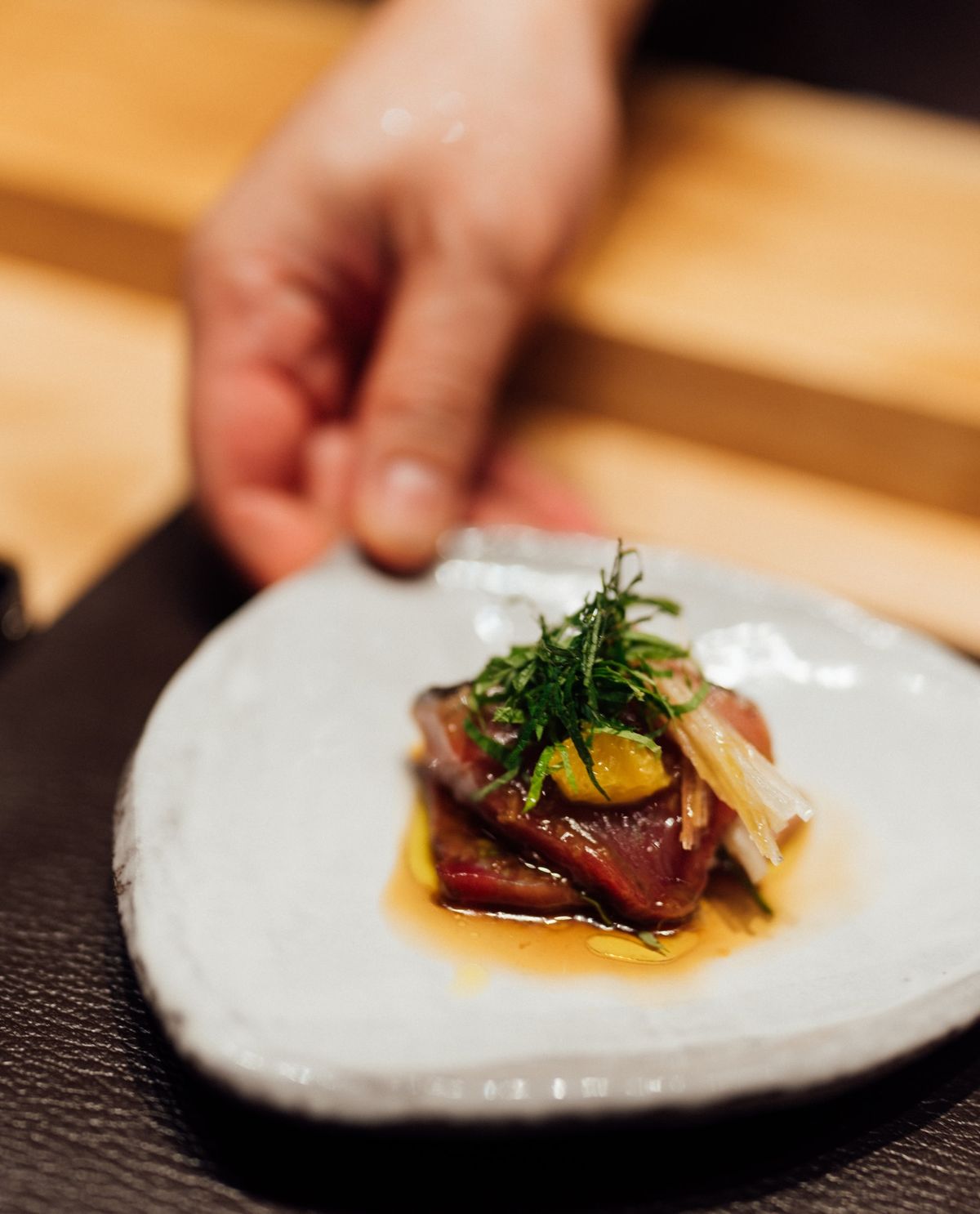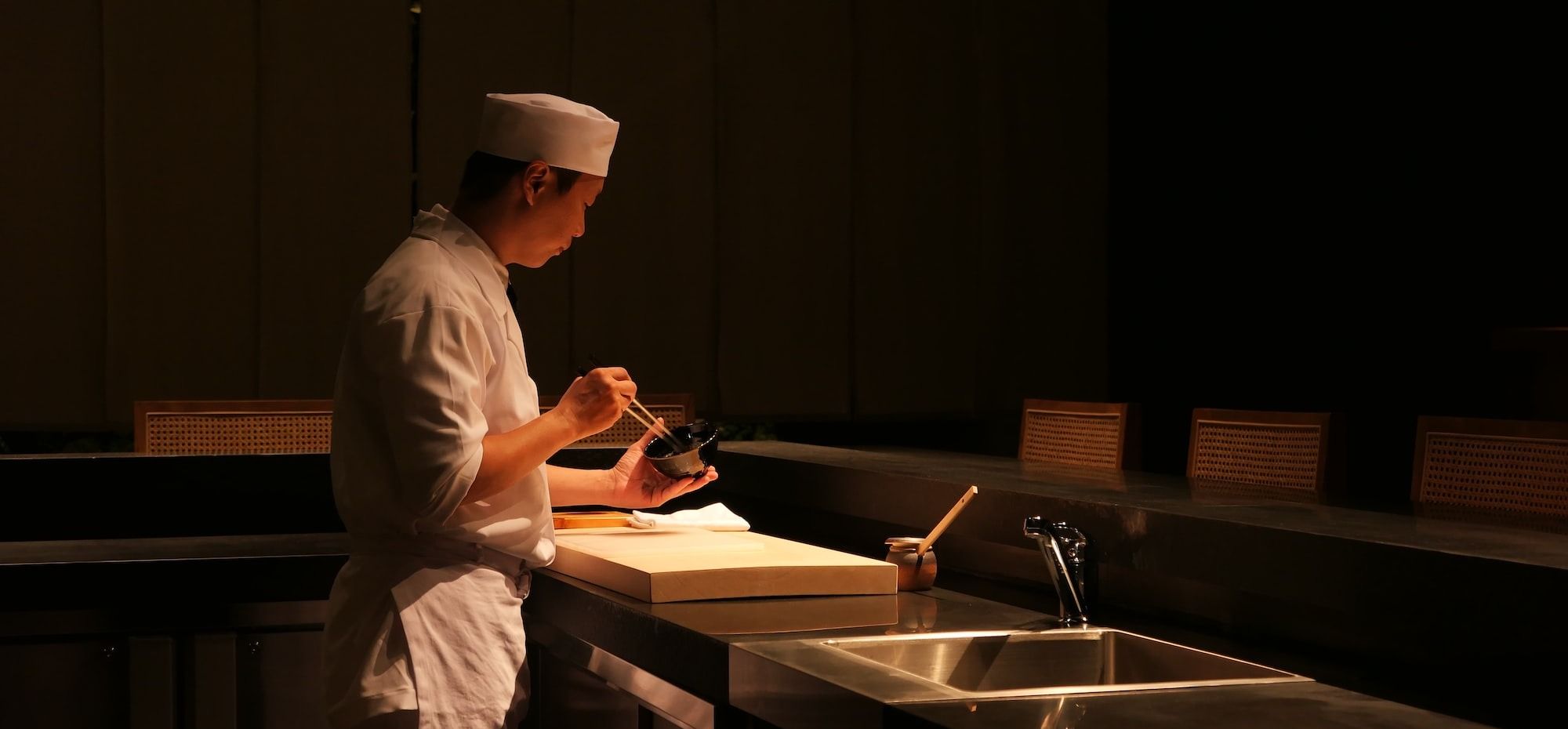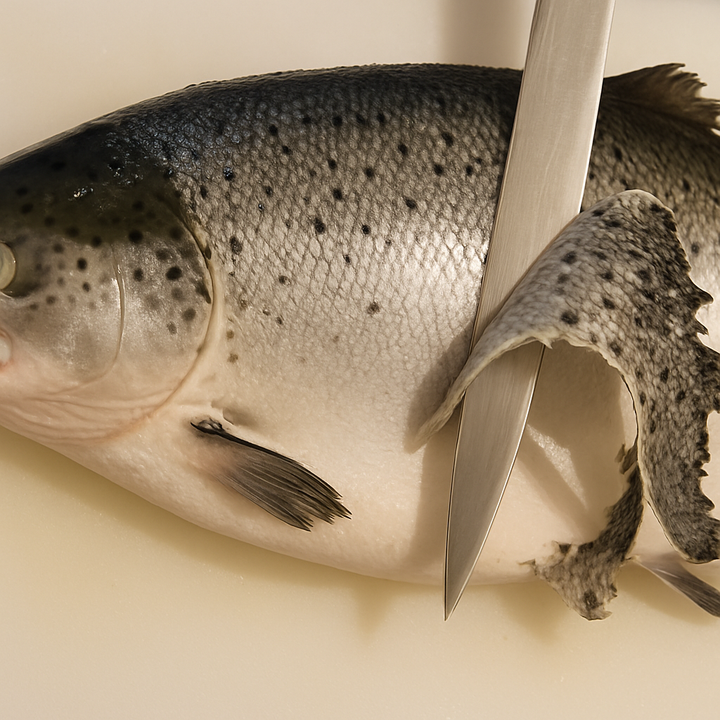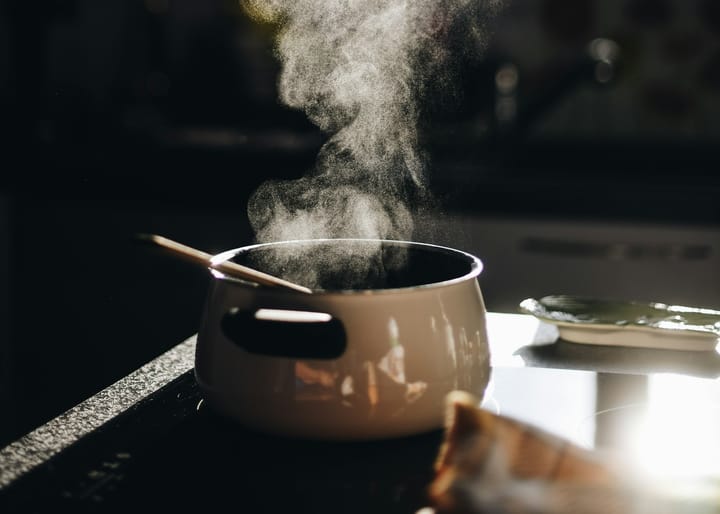Omakase: Here's Everything You Need To Know
Here's everything you should know before venturing into omakase: It's a unique dining journey where you trust a seasoned chef to present a seasonal and visually enthralling meal, transcending the typical menu selection process.

Ever found yourself at a restaurant, feeling swamped by an extensive menu? What if you could bypass the decision maze and entrust your meal entirely to the chef?
Welcome to the realm of omakase, a cherished Japanese dining tradition that relieves you of choice overload and places the culinary reins in the hands of a seasoned chef.
Few dining experiences hold a candle to omakase, where guests surrender to the chef's culinary artistry to receive a meal that's not only seasonal and sophisticated but also a visual and gustatory masterpiece crafted with the finest ingredients available.
What Is Omakase?
Originating from Omakase shimasu, which means "I trust you, chef" in Japanese, Omakase dining is a unique experience where the chef crafts the initial course based on the day's fresh offerings.
Subsequent courses are tailored based on the diner's reactions, allowing a personalized culinary narrative.
Traditionally offered at the sushi counter of Japanese restaurants, Omakase has now found its way into sushi venues worldwide, allowing diners to request additional courses until satisfied.
Omakase vs. Kaiseki : The Difference
Omakase and Kaiseki embody unique facets of Japanese culinary tradition. Omakase, often experienced at a sushi bar, promotes a casual interaction with the chef, who creatively curates dishes based on fresh market finds.
It's an informal, adaptable affair. Conversely, Kaiseki is a formal, high-end multi-course dining experience, featuring nine to 15 carefully crafted small dishes spotlighting seasonal ingredients.
While both celebrate precision, presentation, and Japanese culinary exploration, Kaiseki follows a more fixed, formal structure, unlike the improvisational nature of Omakase.
How Do Chefs Craft Special Omakase Dishes?
Crafting special dishes for an Edomae Omakase meal intertwines a chef's adeptness in traditional and contemporary Japanese gastronomy.
The journey begins with a meticulous selection of fresh, often regionally or seasonally unique ingredients, primarily seafood and vegetables.
Utilizing age-old Edomae culinary techniques like grilling, steaming, or frying, chefs elevate the natural essence of these ingredients. Their creative prowess shines as they explore novel flavor fusions and aesthetically appealing presentations.
The end goal is to concoct a dish that's not only a feast for the palate but also a visual delight. This meticulous attention to detail, paired with the use of prime ingredients, culminates in an omakase meal being a singular culinary voyage.
Things To Know Before Trying Omakase

The Menu is Shaped by Fresh Seasonal Ingredients
Crafting special dishes for an Edomae Omakase meal intertwines a chef's adeptness in traditional and contemporary Japanese gastronomy, requiring well-trained, seasoned expertise for preparing sophisticated omakase dishes.
Many omakase chefs, especially in top US dining spots, source seafood from Tokyo's esteemed Toyosu seafood market, while also valuing local fish for a unique selection.
The authentic experience extends to finer details, like serving rare, genuine wasabi from Japan, unlike the common version found in casual sushi eateries.
Omakase Pricing: A Range to High-End Affair
Discovering an affordable Omakase menu may require a bit of digging, especially in NYC where high-end restaurants offer a basic Omakase meal starting at $200, excluding tax and drinks.
The indulgence escalates with Michelin-starred establishments where the experience begins at $600, further elevating the culinary exploration.
Masa stands out for its clear pricing and unmatched sushi experience.
A casual dining outing can swiftly escalate to a hefty bill by the end, especially when the allure of fresh sea urchin, shirako, or otoro tempts additional orders.
These extra indulgences, while delightful, can spike the bill significantly. To avoid billing surprises, it's wise to call ahead and agree on a fixed price for the Omakase experience.
It’s Going To Be A Long Meal
Omakase dining is a relaxed and luxurious food adventure, best enjoyed when you have plenty of time. Unlike a quick meal before a movie, Omakase is a slow enjoyment meant to be savored over several hours.
The special thing about Omakase is its set of carefully prepared small dishes, served one at a time, allowing you to fully enjoy each flavor before moving to the next.
This dining style is a blend of taste and showmanship, with chefs creating a story through each dish while you watch.
It's not just about tasting the food, but also enjoying the show of how it's made. An Omakase meal requires a good chunk of time—plan for at least two hours to get the full experience.
The restaurant you choose can give you a better idea of how long their Omakase dining will last.
You’ll Interact With the Chef
Omakase dining fosters a dialog between chef and diner, enriching the culinary journey.
At its pinnacle is the counter experience, where diners, seated closely, watch as each sushi piece is artfully prepared and served instantly.
With a limited seating, it ensures personalized attention, transcending a mere tasting menu.
The chef gauges your reaction with each bite, subtly tailoring the menu. Expressing delight over a particular nigiri, for instance, can steer the meal towards your preferences.
Engaging in this dialogue, sharing thoughts on the dishes, not only enriches the experience but also allows the chef to craft a menu that resonates with your tastes, making Omakase a unique, interactive gastronomic adventure.
Limited Control Over Soy Sauce and Garnishes
If you're accustomed to liberally using wasabi, pickled ginger, and soy sauce with your sushi, Omakase dining offers a fresh approach.
At its core, Omakase is about the chef's skill in harmonizing flavors, a craft refined over time.
Chefs season nigiri with a whisper of citrus, salt, and delicate flavors, allowing the fish's natural taste to take center stage.
A dash of soy sauce can overshadow the light flavor of certain fish, potentially dulling the culinary adventure.
The ethos of Omakase is to relish each piece as it's handed to you. Though soy sauce and other garnishes might be available, it's respectful to ask the chef if a roll should be dipped.
This gesture acknowledges the chef's expertise and ensures you experience the meal as envisioned.
Omakase is a pact of trust with the chef guiding your food journey. Fear not, your favored wasabi and soy sauce will be ready to accompany your regular sushi outings, awaiting your return to the familiar dipping ritual.
Every Seasoned Chef is Unique in Crafting an Omakase Meal
Every chef infuses Omakase dining with a unique style, reflecting their culinary philosophy. The seating arrangement, whether at the chef's bar or in a dining room, impacts the dining pace and chef's attention.
Omakase's zenith is a chef crafting dishes in response to each patron, though larger venues may offer a set menu with added extras for practicality.
The artistry in Omakase lies in the nuanced techniques, as chefs aim for a balanced taste in every bite, often starting with lighter fish and transitioning to fattier varieties.
Besides the customary nigiri, some chefs add personal touches with small delights like Matsutake mushroom soup or uni (sea urchin) adorned sashimi, each subtly seasoned to highlight the fresh flavors, showcasing the chef's individual culinary flair.
You Might Dislike As Tastes May Vary
The allure of Omakase lies in its element of surprise, where each dish unravels a new flavor to explore.
You might find yourself enchanted by the delicate taste of bluefin tuna sashimi, only to discover that sea urchin nigiri isn't to your liking with the next offering.
It's the spirit of adventure and an open mind that truly elevates the Omakase experience, allowing you to savor the unexpected twists in the tasting journey.


